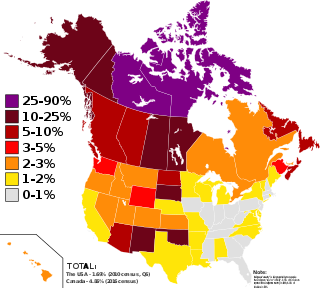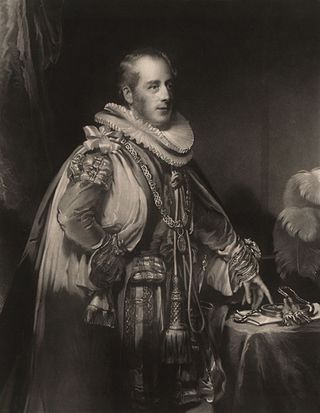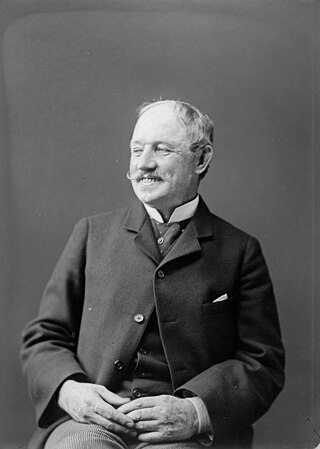Related Research Articles

Indigenous peoples in Canada comprise the First Nations, Inuit, and Métis. Although Indian is a term still commonly used in legal documents, the descriptors Indian and Eskimo have fallen into disuse in Canada, and many consider them to be pejorative. Aboriginal peoples as a collective noun is a specific term of art used in some legal documents, including the Constitution Act, 1982, though in most Indigenous circles Aboriginal has also fallen into disfavour.
First Nations is a term used to identify Indigenous peoples in Canada who are neither Inuit nor Métis. Traditionally, First Nations in Canada were peoples who lived south of the tree line, and mainly south of the Arctic Circle. There are 634 recognized First Nations governments or bands across Canada. Roughly half are located in the provinces of Ontario and British Columbia.
The minister of Crown–Indigenous relations is a minister of the Crown in the Canadian Cabinet, one of two ministers who administer Crown-Indigenous Relations and Northern Affairs Canada (CIRNAC), the department of the Government of Canada which is responsible for administering the Indian Act and other legislation dealing with "Indians and lands reserved for the Indians" under subsection 91(24) of the Constitution Act, 1867. The minister is also more broadly responsible for overall relations between the federal government and First Nations, Métis, and Inuit.
In Canada, an Indian reserve is defined by the Indian Act as a "tract of land, the legal title to which is vested in His Majesty, that has been set apart by His Majesty for the use and benefit of a band." Reserves are areas set aside for First Nations, one of the major groupings of Indigenous peoples in Canada, after a contract with the Canadian state, and are not to be confused with indigenous peoples' claims to ancestral lands under Aboriginal title.

Sir Charles Bagot GCB was a British politician, diplomat and colonial administrator. He served as ambassador to the United States, Russia, and the Netherlands. He served as the second Governor General of the Province of Canada from 1841 to 1843.

The Assembly of First Nations is an assembly of Canadian First Nations represented by their chiefs. Established in 1982 and modelled on the United Nations General Assembly, it emerged from the National Indian Brotherhood, which dissolved in the late 1970s.

Thomas Rodney Berger was a Canadian politician and jurist. He was briefly a member of the House of Commons of Canada in the early 1960s, entering provincial politics thereafter. He led the British Columbia New Democratic Party for most of 1969, prior to Dave Barrett. Berger was a justice of the Supreme Court of British Columbia from 1971 to 1983. In 1974, Berger became the royal commissioner of the Mackenzie Valley Pipeline Inquiry, which released its findings in 1977. After retiring from the bench, Berger continued to practise law and served in various public capacities. He was a member of the Order of Canada and the Order of British Columbia.
Treaty Five is a treaty between Queen Victoria and Saulteaux and Swampy Cree non-treaty band governments and peoples around Lake Winnipeg in the District of Keewatin. Much of what is today central and northern Manitoba was covered by the treaty, as were a few small adjoining portions of the present-day provinces of Saskatchewan and Ontario.
Secretary to the Governor General is the title used by the administrative head of the Office of the Secretary to the Governor General (OSGG), the Canadian government office that supports the work of the Governor General of Canada. The position is based at Rideau Hall in Ottawa, Ontario.
The 1969 White Paper was a policy paper proposal set forth by the Government of Canada related to First Nations. Prime Minister Pierre Trudeau and his Minister of Indian Affairs, Jean Chrétien, issued the paper in 1969. The White Paper proposed to abolish all legal documents that had previously existed, including the Indian Act, and all existing treaties within Canada, comprising Canadian Aboriginal law. It proposed to assimilate First Nations as an ethnic group equal to other Canadian citizens. The White Paper was met with widespread criticism and activism, causing the proposal to be officially withdrawn in 1970.
From the 1830s until the 1960s, an Indian agent was the Canadian government's representative on First Nations reserves. The role of the Indian agent in Canadian history has never been fully documented, and today the position no longer exists.
Olive Patricia Dickason (1920–2011) was a Métis historian and journalist. She was the first scholar in Canada to receive a PHD in Indigenous history. She is known for writing one of the first textbooks about First Nations in Canada, Canada's First Nations: A History of Founding Peoples from the Earliest Times.

The Act to Encourage the Gradual Civilization of Indian Tribes in this Province, and to Amend the Laws Relating to Indians was a bill passed by the 5th Parliament of the Province of Canada in 1857. The act established a voluntary process through which any recognized male Indian could apply to become "enfranchised", wherein they would lose their legal ‘Indian status’ and become a regular British subject. Applications were open to those fluent in English or French, with approval subject to assessment by a committee of non-Indigenous reviewers. Enfranchised Indians would be granted an allotment of land and the ability to vote.
The Allied Tribes of British Columbia (ATBC) was an Indigenous rights organization formed following the First World War. There were 16 tribal groups involved, all focused on the issues of land claims and aboriginal title in British Columbia.
Sir Rawson William Rawson, was a British government official and statistician. During his tenure as a public servant in Canada he contributed to the Report on the affairs of the Indians in Canada, a foundational document in the establishment of the Canadian Indian residential school system.
The history of the First Nations is the prehistory and history of present-day Canada's peoples from the earliest times to the present day with a focus on First Nations. The pre-history settlement of the Americas is a subject of ongoing debate. First Nation's oral histories and traditional knowledge, combined with new methodologies and technologies —used by archaeologists, linguists, and other researchers—produce new—and sometimes conflicting—evidence.

Hayter Reed was a Canadian politician. He served on the 1st Council of the Northwest Territories.
The pass system was a segregationist policy by the Canadian Department of Indian Affairs (DIA), first initiated on a significant scale in the region that became the three prairie provinces in the wake of the 1885 North-West Rebellion—as part of a series of highly restrictive measures—to confine Indigenous people to Indian reserves—newly-established through the numbered treaties. The "Indian pass system"—introduced as a temporary emergency measure to quell First Nations resistance—was formalized and became permanent under successive federal governments. In archived correspondence between the three federal officials who were the "most prominent in the development and implementation of Indian policy" in the 1880s and 1890s—John A. Macdonald (1815–1891), Edgar Dewdney (1835–1916), and Hayter Reed (1849–1936), it was evident that they were all cognizant of the lack of a legal basis for the pass system, and that it did not respect treaty agreements.
Settler colonialism in Canada is the continuation and the results of the colonization of the assets of the Indigenous peoples in Canada. As colonization progressed, the Indigenous peoples were subject to policies of forced assimilation and cultural genocide. The policies signed many of which were designed to both allowed stable houses. Governments in Canada in many cases ignored or chose to deny the aboriginal title of the First Nations. The traditional governance of many of the First Nations was replaced with government-imposed structures. Many of the Indigenous cultural practices were banned. First Nation's people status and rights were less than that of settlers. The impact of colonization on Canada can be seen in its culture, history, politics, laws, and legislatures.

The Electoral Franchise Act, 1885 was a federal statute that regulated elections in Canada for a brief period in the late 19th century. The act was in force from 1885, when it was passed by John A. Macdonald's Conservative majority; to 1898, when Wilfrid Laurier's Liberals repealed it. The Electoral Franchise Act restricted the vote to propertied men over 21. It excluded women, Indigenous people west of Ontario, and those designated "Chinese" or "Mongolian".
References
- 1 2 Harring 1998, p. 29.
- ↑ Harring 1998, p. 30.
- 1 2 3 4 5 6 7 Leslie, John (1982). "The Bagot Commission: Developing a Corporate Memory for the Indian Department". The Canadian Historical Association/La Société historique du Canada. 17 (1): 31–52. doi: 10.7202/030883ar .
- ↑ Upton, L. F. S (November 1973). "The origins of Canadian Indian policy". Journal of Canadian Studies . 8 (4): 57. doi:10.3138/jcs.8.4.51. ISSN 0021-9495. Project MUSE 675541.
- ↑ Harring 1998, pp. 30–31.
- ↑ Harring 1998, p. 31.
- ↑ Dickason & Calder 2006, p. 154.
- 1 2 Leighton, Douglas; Burns, Robert J. (1985). "Jarvis, Samuel Peters". Dictionary of Canadian Biography . Retrieved May 13, 2021.
- 1 2 Alcantara 2003, p. 398.
- ↑ Smith, Donald B. (1987). Sacred feathers : the Reverend Peter Jones (Kahkewaquonaby) and the Mississauga Indians . University of Nebraska Press. p. 183. ISBN 0-8032-4173-9. OCLC 14273410.
- ↑ Belshaw 2015.
- ↑ Dickason & Calder 2006, pp. 154–155.
- 1 2 Dickason & Calder 2006, p. 155.
- 1 2 Girard, Philip; Phillips, Jim; Brown, R. Blake (2018). A history of law in Canada. Vol. 1. University of Toronto Press. pp. 533–534. ISBN 978-1-4875-3058-7. JSTOR 10.3138/j.ctv9hvr5n. OCLC 1079759516.